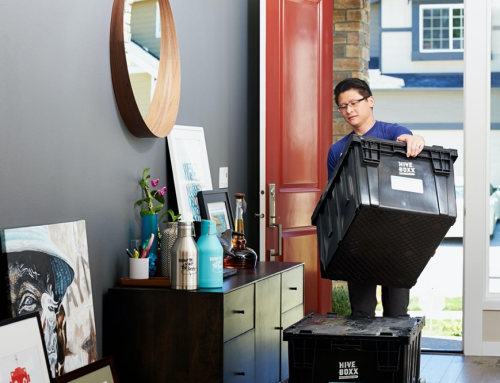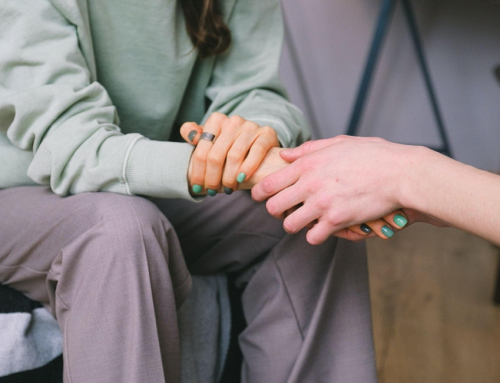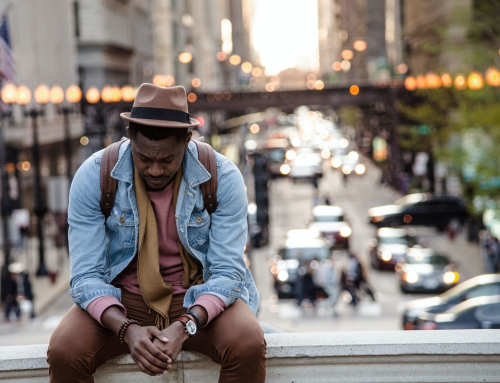
Photo by Annie Spratt on Unsplash
People with an avoidant attachment style grew up with caregivers who devalued or avoided emotional and physical closeness. Dependency was denied, leaving the child to figure out ways to self-soothe and regulate their own emotions. When the child reached out for closeness, they were met with disappointment or made to feel ashamed.
Using alone time to regulate our emotions
As an adult, avoidantly attached people feel self-reliance is important. We know we can count on ourselves and won’t be made to feel embarrassed or needy.
If someone is not comfortable reaching out for human support and comfort, they often turn to things, according to Marion Solomon and Stan Tatkin in their book, Love and War in Intimate Relationships. If we can’t count on a primary relationship to comfort us, time to self-regulate and engage with things like books, money, cars, art, fitness, etc., becomes imperative.
Interruptions from a partner during our auto-regulation time, feel invasive and irritating. Disruptions are felt as a shock to the nervous system, which makes us want to withdraw more or lash out.
This alone time or need to auto-regulate does not seem anti-relationship to the avoidant person. We often think of ourselves as independent or autonomous and even feel a sense of pride in that.
The truth is real autonomy occurs when we have a safe relationship from which to venture and explore.
Introvert or avoidant?
In my seven years of research and writing about introversion and high sensitivity, I have seen both innate introversion and adapted avoidant attachment style contribute to a person’s need to pull away from others. Some people are 100% introverted based on their biology, others have developed avoidant tendencies due to their relationship history and still others are a combination of the two.

Photo by Steve Halama on Unsplash
Our partners suffer
The partner of the avoidant individual is the one who feels the disconnection. They don’t understand how their partner can be engaged and intimate one moment and disengaged and distant the next.
The avoidantly attached partner happily spends time away from their lover. We can auto-regulate and still feel our partner’s presence by thinking about them.
A more interactive partner does the same regulating but with us present. Our absence is felt deeply when we withdraw.
Secure relationships
Secure, healthy relationships or attachments require a degree of co-regulation. The partners can safely rely on each other for calming and responsiveness. If one person consistently uses a psychological system of one to soothe themselves and avoid their partner, the abandoned partner will eventually protest or find someone or something to fulfill his need for comforting.
Avoidant behavior arrives later in a relationship
The avoidant attachment behavior (withdrawal, need for alone time, distancing) may not surface for a while in a relationship. At first, we get enough time to ourselves. New partners may only see each other once a week. At the point when the relationship reaches a level of permanence and the couple is together regularly, the need for withdrawal and distancing surfaces. The old feelings of rejection or dependency denial from our primary caregiver rear their heads and cause us to protect our ability to self-regulate.
Conflict in a relationship may also trigger avoidant behavior. When we feel unsafe we revert to our old safe, familiar habits.
How to move toward security in a relationship with an avoidant person
According to Solomon and Tatkin in Love and War, the more secure partner should modify their voice and forward acceleration (movement toward them) as well as their word choice to prevent their avoidant partner from feeling like the bid to connect is a threat to their (avoidant person’s) autonomy.
Avoidant people get anxious when someone advances on them quickly or loudly. It’s subconsciously perceived as a threat, causing us to protect ourselves by getting away or acting defensively. Previous primary relationships wired this feeling into our brains.
For our part, the avoidant person has to repair quickly when we have hurt our partner by withdrawing or admonishing for an interruption. We also must proactively reach out for proximity and connection more often.
The truth is
The truth is avoidantly attached people want to depend on and love others. We reach out but when we feel someone lets us down or is not available to us, we complain, which often causes our partner to distance themselves. This distancing confirms the avoidant’s belief that we cannot depend on anyone and we slip back into our old self-soothing habits.
Does avoidant behavior sound familiar to you? Do you or your partner withdraw or distance?







Yes, there is never a perfect harmony, anyone who says their relationship is always rosy is lying. However my wife and I are probably both avoidant, and live two strongly independent lives, most of the time benefiting from our partnership, while not smothering or needing too much. Of course there are times when I wish for more of her, and perhaps times when she wishes for more of me. But on balance I think we both thrive with our self-sufficiency, and would probably be in distress if we were with a partner who needed too much. Interesting to consider. Maybe I’ll read love and war in intimate relationships.
Yes, I’m one of them! Can’t seem to connect or keep a connection.
What do I do?
Hello Dimf2014. Welcome to the club! Although, I consider myself more of a ‘recovering avoidant’ at this point. If you are serious about finding and maintaining more connections in your life, you have accomplished step one. We have to consider connection important and truly want it if we want to have any chance of creating a secure relationship. Another crucial step is to realize that you may have a difficult time with emotional and physical intimacy and why (previous relationships that left you feeling alone or rejected, including family relationships). If you are aware of your challenges, then you can work to overcome them. It will take a partner or companion whom you trust and feel extremely safe with, for you to be able to reach out and maintain consistent proximity. A more secure partner can handle your inevitable distancing and make you feel safe enough to stay close for longer periods of time. If a partner complains about your withdrawal or lack of emotional intimacy, don’t get defensive. See it as their way of saying they miss you and want to stay connected. Explain that the closeness brings up unease, past rejections and fear. Also let your person know that you have trained yourself to self-soothe. It will take a while to learn to co-regulate, but you are interested in learning how. Best and warmest wishes. I hope you eventually feel the warmth and energy of co-regulation.:)
Yes, or both partners are rather the same on this scale… may yield quite content relatively independent lives, and enough connection for both.
Hi Steven. Do you have personal experience with this? It’s been my own experience that even if both partners are more avoidant, one ends up being more interested in connection and feels unsafe or disconnected from their partner. It seems like it would work with both being more independent but that has not been my experience or what I’ve seen in books on attachment. I would love to hear a different perspective if you have it.